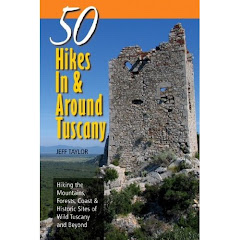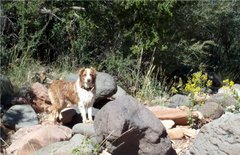Distance: 7.4 miles round trip (11.9 km)
Elevation: 3005 - 3150 feet (915 - 960 m)
Difficulty: Moderate
Time of Year: late October - early May
Every been to a California Fan Palm Oasis? Although commonly planted in Southern California cities, the native range of this species includes only158 oases scattered across the Mojave Desert at the base of mountains and canyons that have seeps to provide a year round supply of water. I wrote about a couple of the oases that are easy to visit, including Mountain Palm Oasis here and HERE in Anza-Borrego Desert State Park in San Diego County. I personally have visited about 12 of these oases, including the only one in Arizona. But, if you want to visit a fan palm oasis that you have to hike to miles away from the nearest road, then Lost Palms Oasis is the one for you.
The trail to the Lost Palms Oasis starts at the Cottonwood Springs Campground in the southern portion of Joshua Tree National Park. Cottonwood Springs itself is a small palm oasis, that has one large cottonwood in the middle of it. But, it is nothing compared to what you will see at Lost Palms Oasis. The easiest access is to take the exit off of Interstate 10 east of Indio to the South Entrance to the park.
From Cottonwood Springs, the trail heads across a landscape of jumbled granite boulders and beautiful vistas. Along the trail you can easily see the snow-capped San Gabriel Mountains and Mount San Jacinto rising above the Coachella Valley. At one point, the entire Salton Sea, located 226 feet below sea level, comes into view.
 |
| The Salton Sea is visible from along the trail |
The trail then comes over a rise and a dry wash flush with California junipers and evergreen desert scrub oak who enjoy the shade and extra moisture that accumulates in the washes. As you look over the dry landscape dominated by common Mojave Desert vegetation of yucca, rabbit brush, and cholla, it is still hard to image that there will be palm trees out here.
Then, as you come over another rise, suddenly you see a canyon with these clumps of 60 foot high palm trees rising in a terraced wash. There is no water flowing on the surface, but you can see how it works its way down the wash based on the contours of the granite rocks and where the palms are located.
 |
| The first glimpse of the fan palms |
Once you get down into the palm grove itself, you will see that many of the palms have burn scars on their trunks and several that are dead. Fire is actually an important function that maintains these ecosystems. Palms can resprout their fronds following fire and fires will clear out other vegetation trying to compete for the available water.
 |
| In the wash amongst the palms |
Palms who have not burned in recent years will have dead fronds that skirt the trunk, sometimes all the way to the ground. These provide habitat for birds nesting and insulate the trunk from occasional winter cold snaps. California fan palm fruits were an important food source for native peoples historically, in addition to the obvious water source in the area. Today, the fruits remain important to the many Mojave Desert birds who visit these oases.
 |
| One of the surface springs in the lower portion of the wash |
If you visit the lower portions of the oasis, there will possibly be small pools of open water. These springs and seeps are critical habitat for amphibians and insect species in an otherwise completely dry landscape. Canyon tree frogs are common in these oases. The Desert slender salamander is no longer found in Joshua Tree NP, but does live in two fan palm oases in the Santa Rosa mountains, the last place on Earth for this species. Desert pupfish are also found at a few oases. Obviously, these surface springs also provide critical water supplies for animals such as desert bighorn sheep, desert tortoises, mule deer, mountain lions, coyotes, and many others.
 |
| Looking down the canyon from the end of the oasis |
Continuing down the wash, the palms thin out and then the wash steepens into a narrow canyon that feeds all the way out of the mountains. This is probably a good place to turn around. Joshua Tree National Park has a number of other hidden fan palm oases in the surrounding canyons, but it would require a lot of off-trail exploration over rugged terrain to find them.
 |
| Walking back amongst yucca and granite |




















